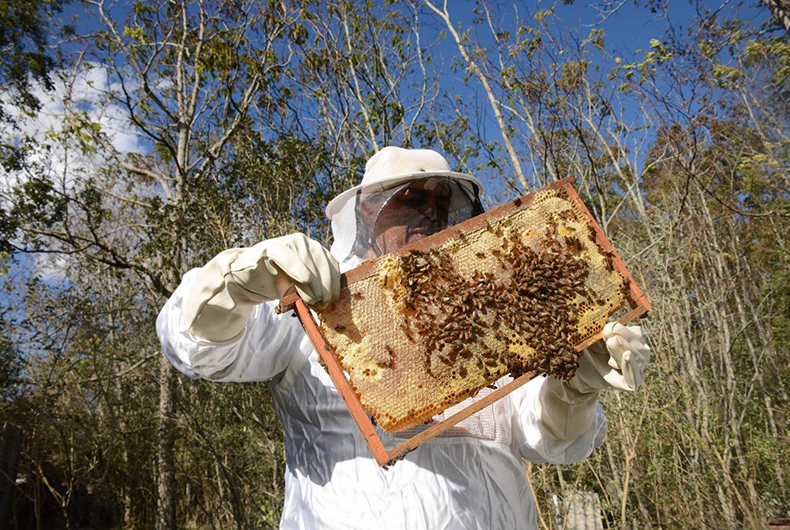
A study pointed out the presence of insecticide in 77% of hives with bee mortality
Between January and April 2021, in 77% from samples of hives with bee mortality in Rio Grande do Sul there was the active ingredient fipronil, broad-spectrum insecticide used in various types of crops. The result was released by the head of the Agricultural Input and Services Division of the Secretariat of Agriculture, Livestock and Rural Development (Seapdr), Rafael Friederich of Lima, during the webinar “Drift of pesticides, protection of sensitive bees and crops”, promoted by Crea-PR and by the Agricultural Defense Agency of Paraná (Adapar) in this Monday, 14.
In the period evaluated, were collected 18 samples of hives that registered mortality, some in 100% Bees. The collected material was sent to the Pesticide Residue Analysis Laboratory of the Federal University of Santa Maria (UFSM). "Of the 13 reports already ready, it was verified the presence of fipronil in 77% of the samples. In 69% from them, there was the presence of more than one active ingredient. And in two the substances carbofuran and fluquinconazole were registered, prohibited in Rio Grande do Sul", presented Lima.
Several factors influence the reduced number of samples. "There are few official notifications, as there is a fear of reporting for involving third-party areas. We have promoted lectures, meetings and distribution of booklets to encourage the beekeeper to seek the secretariat and notify", details Lima.
From the complaint, which can be registered at any Seapdr inspectorate or agricultural defense office, a team consisting of an agronomist and a veterinarian visits the property to collect samples. "This joint action is needed to assess whether diseases may have been, also, one of the factors in the death of bees", Lima explains.
SIM Bees Project
From a civil inquiry by the State Public Prosecutor's Office (MP-RS) on the relationship between bee mortality and the use of fipronil, the SIM Abelhas Project – Information and Monitoring System for Bees of Rio Grande do Sul was created, which is in the implementation phase. The project management committee is composed, in addition to MP-RS and Seapdr, by the State Foundation for Environmental Protection (Fepam), Federal University of Rio Grande do Sul (UFRGS), Pontifical Catholic University of Rio Grande do Sul (PUCRS), Federation of Agriculture of the State of Rio Grande do Sul (farsul) and companies in the pesticide sector.
"The SIM Abelhas aims to implement centers in ten geographic regions of the State, in order to monitor, remote form, the flow and activities of the bees, to see which are the periods of the year with more or less movement and what has been implicated in the deaths", Resume Five.
The project also intends to monitor the presence of pesticide residues in honey, in pollen and foraging bees, in addition to characterizing and monitoring microorganisms and ectoparasites that can cause disease to hives. "Companies in the sector are joining a broad project, non-government, and yes of state, with operations throughout Rio Grande do Sul", Lima ends.
14 June 2021 17:39

Sorry, the comment form is closed at this time.